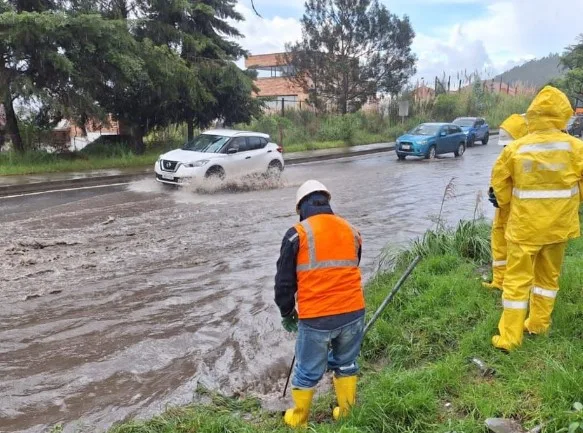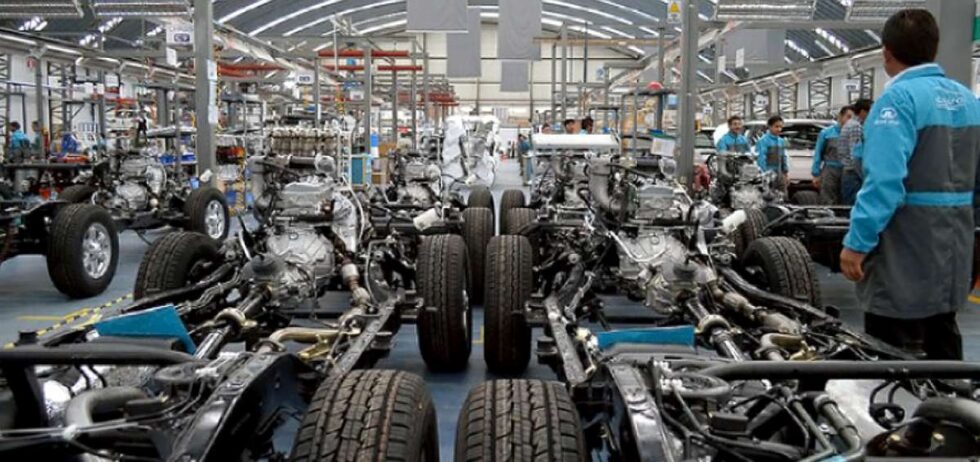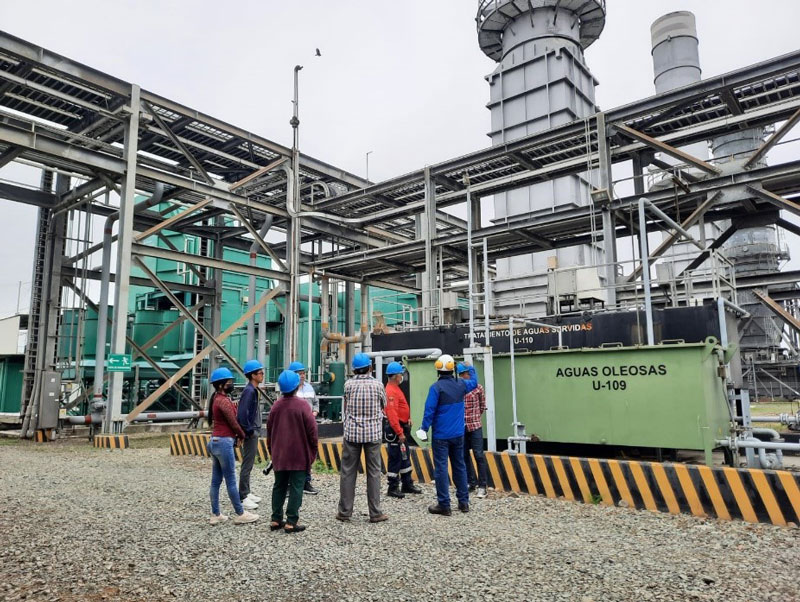New risk atlas will show flood, earthquake and landslide zones; Dramatic drop in fertility rate is concern for the future; Orchestra performs Friday
Miércoles, 21/2/2024
Hola, Todos –
Actividades –
Concierto sinfonico – The Orquesta Sinfónica de Cuenca will present its 7th concert of the year el 23/2 in the Teatro Casa de la Cultura. The program will include works by Dvorak and Brahms. Free.

Cuenca’s new risk atlas will show which areas are prone to natural hazards such as flooding, earthquakes and landslides. (El Mercurio)
Exposición artesanal – A show of products by artisans from Chordeleg and Gualaceo will be open until el 8/3 in the Aceleradora Cultural (Luis Cordero y Pres. Córdova). Hours are from 10-18:00, lunes a viernes. Admission: free. <I was afraid that if I just wrote “Free” some of you would think the products in the exhibits were free.>
Seminario gratuito – There will be a Zoom webinar from el 26/2 to el 1/3 on intellectual property for Ecuadorian artisans. If you are interested, register using the form at https://forms.gle/guEESqpAGJTuSJXV6.
Titular –
Cuenca tendrá un Atlas Cantonal de Riesgos (Cuenca will have a Cantonal Risk Atlas) – Cuenca will be the 1st city out of the 221 in Ecuador, which will have a Cantonal Risk Atlas. It will be a national and cantonal planning tool so that the canton will have seismic microzoning since quakes are one of the main natural risks in Cuenca. There are 2 large faults in Azuay – the Girón and Paute faults. The Girón fault is capable of generating at least a 7.1 quake. As a reference, the April, 2016 quake in Manabí was a 7.8. Patricio Nivelo, a civil engineer and seismic researcher said that the Red Sísmica del Austro (RSA) has detected an increase in the number of temblores (tremors – your word for the day) in Cuenca in the last year. The atlas and seismic microzoning will let the City know where it cannot issue building permits.
Another risk in the canton is of flash floods in the rivers. Carolina Poveda, a civil engineer and researcher in risk reduction, said the atlas should include an update of zones vulnerable to flooding from the 4 rivers. Currently between 15 & 17 areas were identified in a 2010/2011 study. The map shows the areas with the biggest risk if the Tomebamba floods are the Quinta de Balzán, the Jefferson Pérez coliseum, y El Paraíso. If the Yanuncay floods, the biggest risks are the bridge in the Misicata sector, 3 Puentes, and the Universidad de Azuay (UDA).
Marco Antonio Soria, an architect and researcher in urban planning, the atlas should update slide zones which were identified in 2010. The City study determined that 12 of the canton’s 21 rural parishes are vulnerable to problems due to unstable soils. These are San Joaquín, Baños, Sinincay, Octavio Cordero, Sidcay, Llacao, Paccha, Nulti, Turi, Tarqui, Santa Ana y Quingeo. In the 12 urban parishes, the 5 with problems are Yanuncay, Cañaribamba, Hermano Miguel, Monay y Machángara. <Seems like humans can’t get away from the threat of natural disasters — in the US you might have had hurricanes, tornadoes, floods, droughts, 15 feet of snow, earthquakes & landslides. What am I missing — evil mothers-in-law?>
Cuenca –
Obras para renovar Parque De la Madre (Work to renovate Parque De la Madre) – Sa Empresa Municipal de Aseo (EMAC EP), is working to renovate the park furniture and children’s play structures.
Cutín de Sangre, la rana que solo existe en Cuenca (Cutín de Sangre, the frog that only exists in Cuenca) – In 2008, Juan Carlos Sánchez who was a student of biology at the U. de Azuay, visited Chanlud in the Macizo del Cajas. He heard an odd song, followed the sound, and found a large red frog with thick arms like Popeye. Without knowing it, he had discovered a new species. He took a picture and didn’t think about the frog again until a 2016 project that sought to answer the question, “Has the Macizo del Cajas been sufficiently explored to know what’s there?” The short answer was “No.” The research group saw the Cutín de Sangre and published its discovery in the ZooKeys magazine in 2018. The frog’s territory only covers 1 sq. km, and is an animal at critical risk. After that category is extinction.
Nacional –
Policía halla 293 kilos de cocaína en envíos de bananas (Police find 293 kilos of cocaine in banana shipment) – The National Police announced they found 294 kilos of cocain hidden in 2 containers of bananas going to the port of Rotterdam in the Netherlands. The drugs were found in one of the ports in Guayaquil by special agents using dogs trained to detect drugs. <I’m going to add an ongoing item to the periodico which will cover drug seizures which seem to be happening more often and regularly. Just basics – what, when, where, how much, where was it hidden and where was it going.>
De El Mercurio de martes, 20/2/2024 (1 article):
Para el 2050 Eucador tendrá 21 millones de habitantes (By 2050 Eucador will have 21 million inhabitants) – The Instituto Nacional de Estadísticas y Censos (INEC) presented its projections for population changes by 2050 when the population is expected to reach 21,100,000. Currently it is at 17,500,000 and growing at a slower rate than it grew before 2010. This deceleration is expected to continue for the next 25 years with 3 contributing factors: fertility rates, death rates, and migration.
According to INEC, the fertility rate has decreased drastically since 1950 when the birth rate was 300 births per 1,000 women. In 2022, this had dropped to 25 births. The number of children under 2 and of youth are both expected to decrease. The current fertility rate is less than the population replacement rate of 2.1. Currently women have an average of 1.86 children. In 1990 they had 3.82 children, and in 1950, 6.83. <When I was growing up, we always figured that the big families were Catholic. But then I don’t think that we had many Mormons in Minnesota.> Various factors contribute to this including women having fewer children at later ages and marrying later (average age 30-32 years). Divorces have increased, marriages have decreased, use of contraceptives has grown, and more women are completing higher education.
Mortality rates have also changed as consequence of the Covid pandemic and increase in violent deaths. In 1950 the average number of deaths was 72,000, this dropped to 60,000 in 1990, and went back up to 76,000 in 2010 and to 142,000 in 2020, and 97,000 in 2022. <But wouldn’t population growth mean more people dying, too?> The average age of the population is also increasing from 25.3 in 1950 to 26.1 in 2001, 31.1 in 2022, with projections for 37.6 in 2040 and 40.8 in 2050. Life expectancy has also increased by 32 years between 1950 and 2022 for women. in 1950 it was 48.5 and by 2022 it rose to 80.5. <Of course, you have all those 100-year-olds in Vilcabamba distorting the averages.> It is expected to rise to 82.1 in 2030 and 85.5 in 2050. <Barring another natural disaster like Covid.> Men’s average life expectancy was 46.1 in 1950 and expected to be 79.6 in 2050.
And that’s all for today so Hasta ? –
Jeanne

















